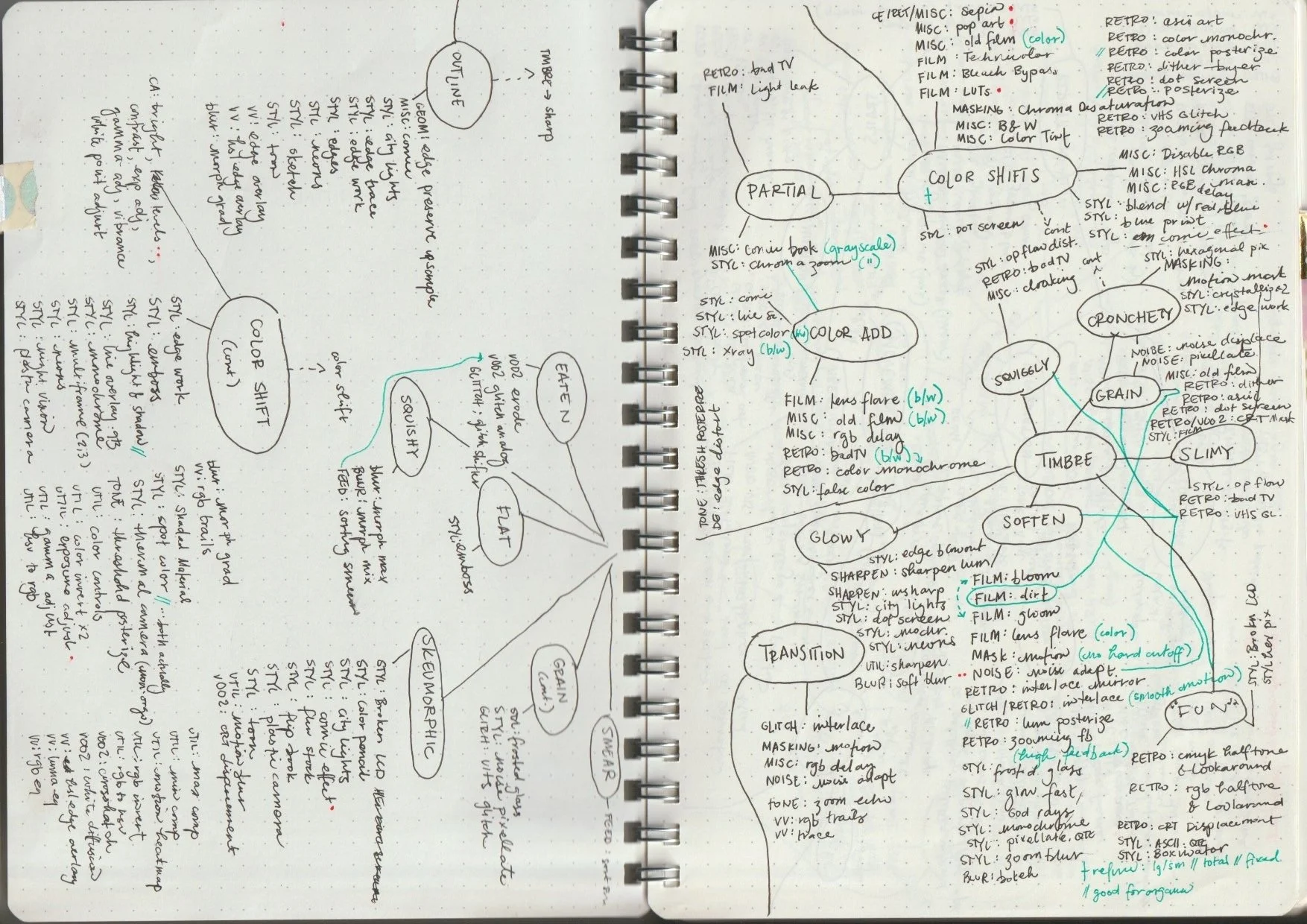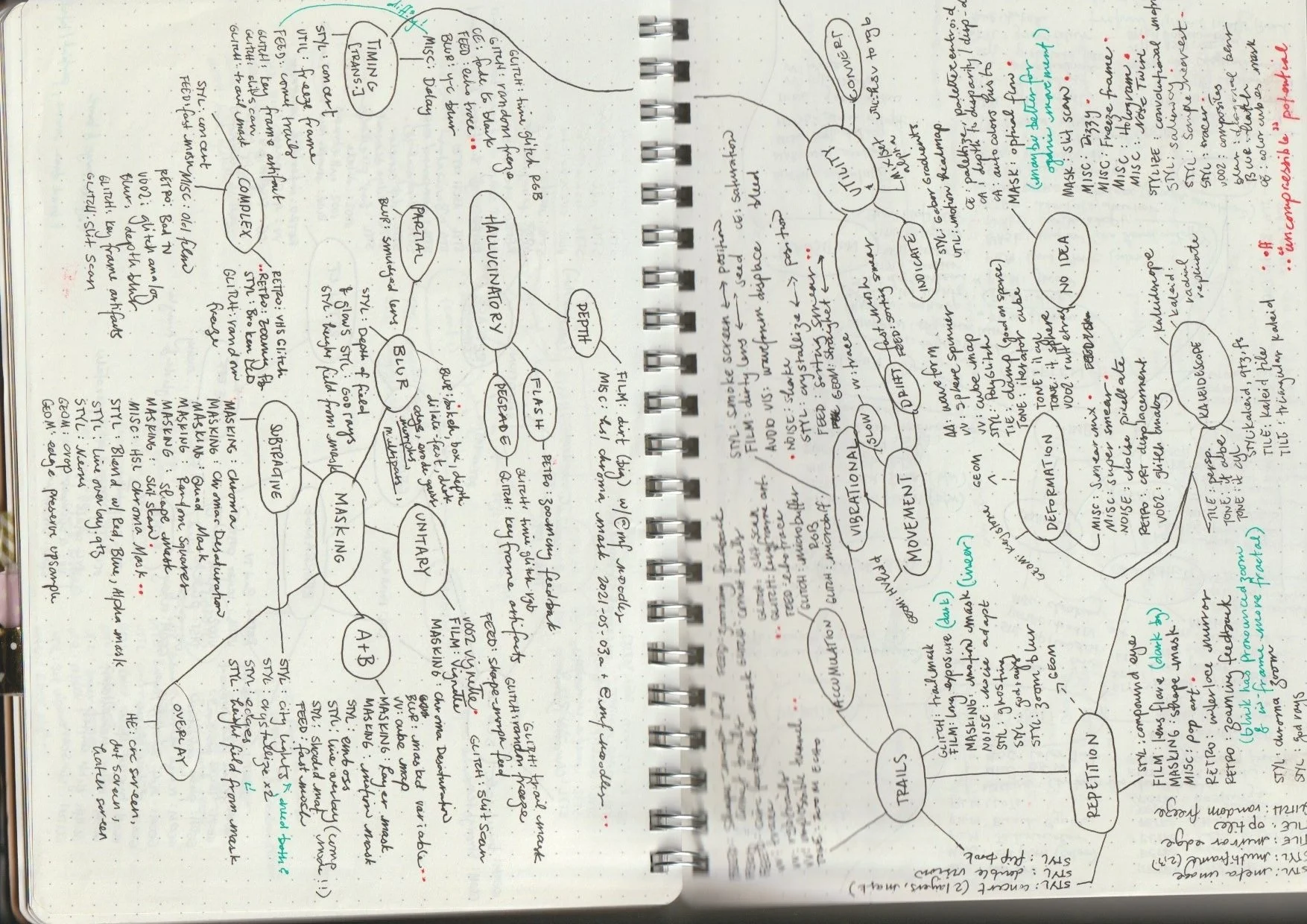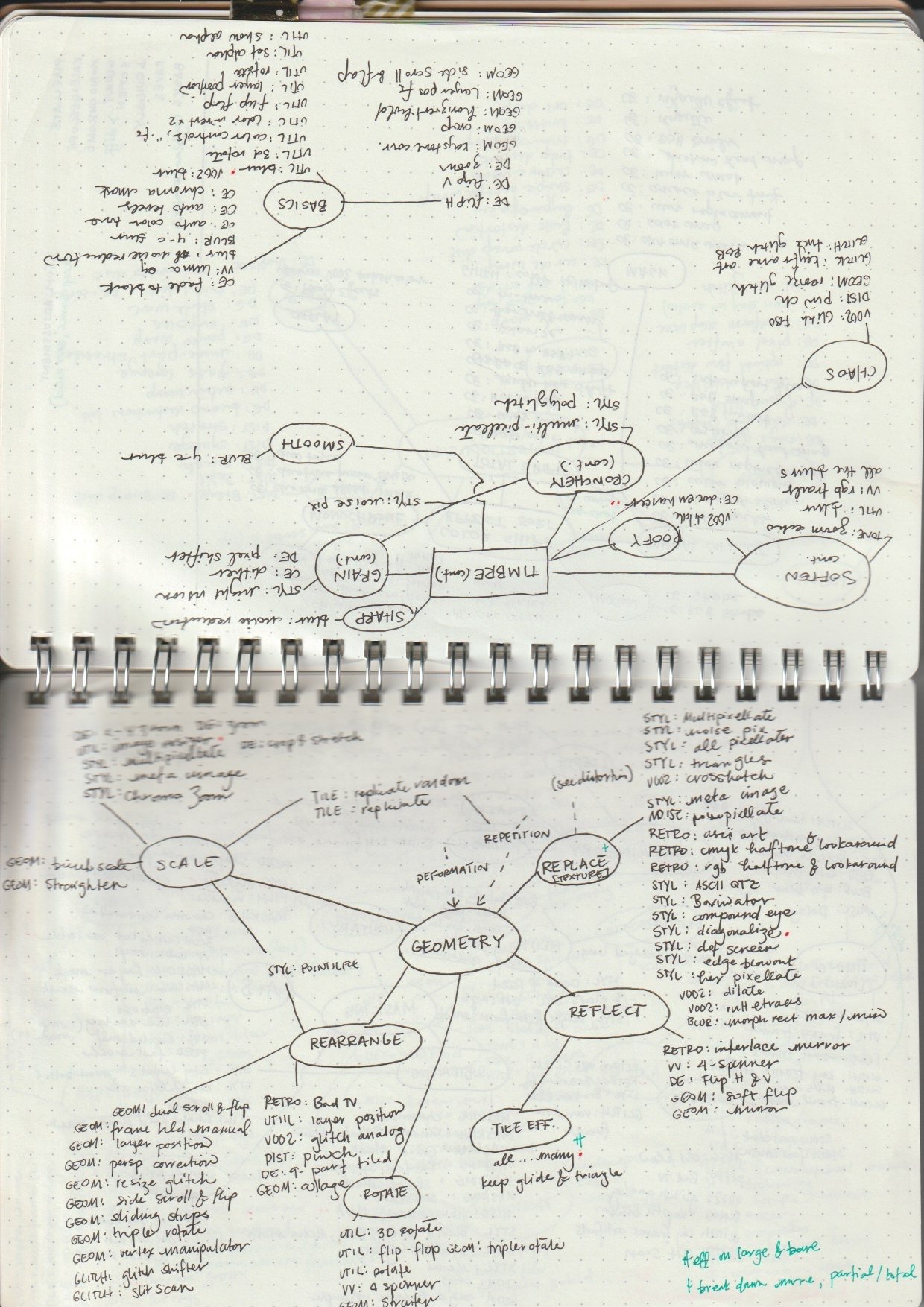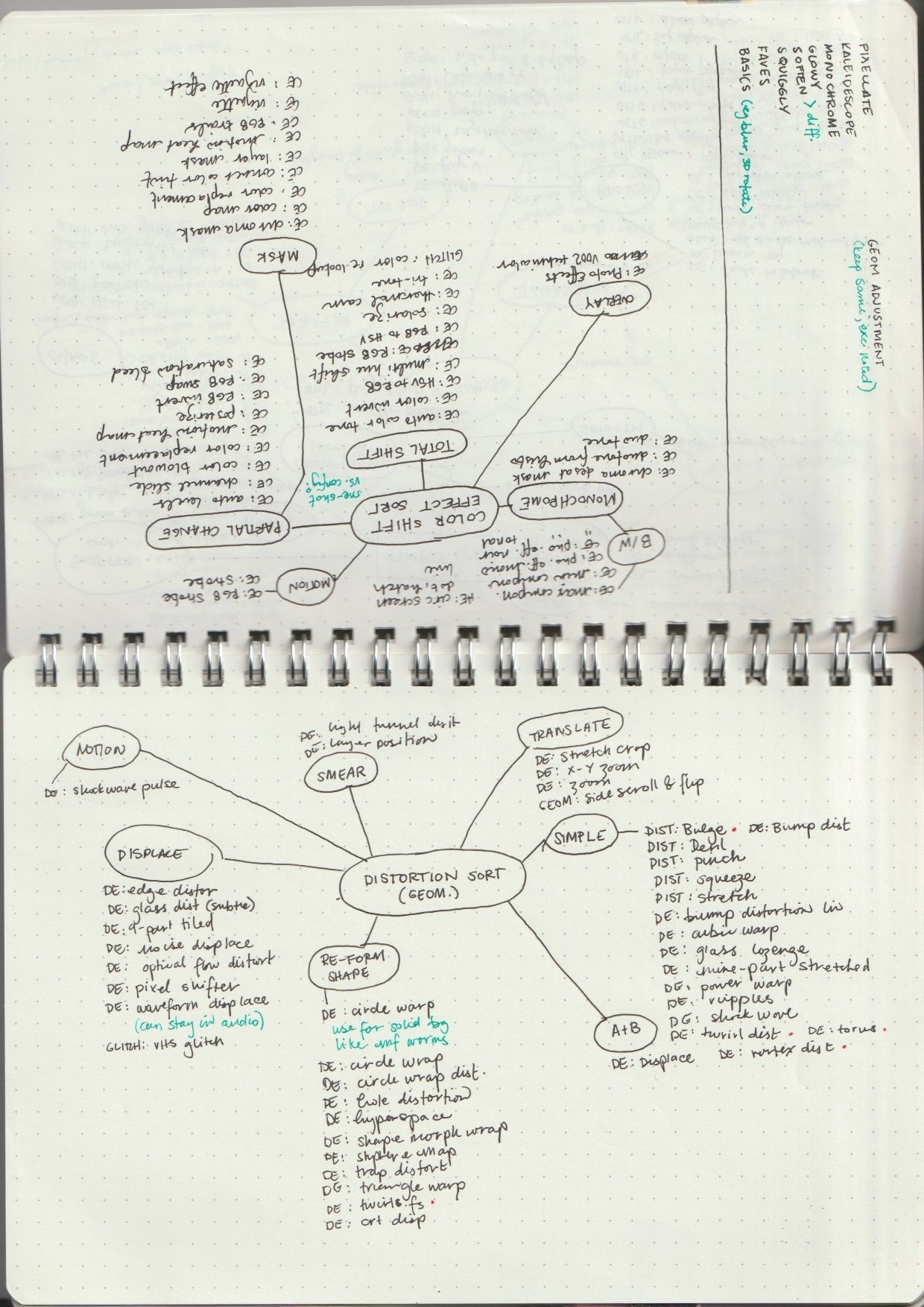We're kicking off something new: a series of conversations with the people who inspire us in the art-tech community. We're sitting down with friends, creators, and pioneers to talk about their work, ideas, and the tools that make it all possible.
To start this new series, we couldn't think of two better people to chat with. We're thrilled to be joined by the brilliant artist and developer Anton Marini (Vade) and the prolific media artist Sarah Groff Hennigh-Palermo (SarahGHP). This first episode was less of a formal interview and more of a friendly hangout—we simply hit record and dove deep into their creative philosophies, their processes for taming (and breaking) hardware, and the fascinating history of analog glitch.
You can watch the full conversation right here (TLDR below):
Introductions
Before diving into the conversation, here’s who we have on for this episode:
David Lublin: Artist, Programmer, Occasional Mathematician, and Host
Cornelius (ProjectileObjects): Creative Technologist, Educator, and Host
Sarah Groff Hennigh-Palermo (SarahGHP): A media artist who works with video, live code, and regular software.
Anton Marini (Vade): Artist, developer, and co-creator of Syphon, who builds and shares video tools to perform with.
Warm up topic (1:20 - 6:03)
Put any group of programmers together in a group and they will talk about the hardest problem in software development: date / time stamps and calendars. We spend the first few minutes nerding out about intergalactic time-keeping in Star Trek, the Gregorian calendar switch (and its effect on JavaScript libraries), and why winter used to be an "undetermined period of time".
Glitch (6:04 - 16:40)
Vade and Sarah are both well known for their work as glitch artists. They talk to us about "glitch vs. glitch-alike," analog vs. digital glitch, and the tools they each use to create glitch visuals.
David: When you hear "glitch art," what does that mean to you?
Vade: A good place to start is the definition of a glitch... which is a system that's not behaving the way you expect it to behave. You get these... philosophical... questions about, 'Is it really a glitch if I ask for it?'
David: That distinction is key—the difference between mimicking a glitch style versus taking advantage of actual bugs. It reminds me of the early v002 glitch plugins and the work Zak Norman did with Squarepusher.
SarahGHP: For me... the interesting part of the work is understanding how machines work by breaking them. ...I'm fascinated by the materiality of video... which is very funny because I think people think of it as very immaterial, which is wrong, like it's still coming out of silicon or tubes or something else. ...I have a picture from earlier this year... of, like 30 people staring at, like, static projected on a wall. And I felt like that's like my peak life. I have achieved my dream by making people stare at static.
Vade: It's just an electron and someone has some opinions about what it's supposed to do. And when you break those opinions, you get some interesting things, right?
Analog Video Hardware and Hardware Recreations in Software (16:40 - 34:03)
Vade tells us about meeting and working with Bill Etra to create his v002 Rutt Etra plugins for Quartz Composer. Sarah talks about discovering the Fairlight CMI, frame buffers, and the video Eurorack modules in her rig.
Vade: The genesis of working with Bill [Etra] was sort of, a byproduct of being... in the right place at the right time. Bill was in New York, and he started coming to these events that we used to have called share. ...He had a vision for what a video orchestra would be and how video as an instrument could evolve from analog to, digital systems.
David: His work on the Rutt/Etra Video Synthesizer fundamentally changed video art.
(As Vade notes, the history of these tools is best shared. You can see the original Rutt/Etra Demo from 1974 here, read Bill Etra's obituary in the New York Times, and see the aesthetic in action in Sarah's work "Dorsal".)
SarahGHP: I did a residency in 2019 at Alfred University, where they have, really old Jones frame buffer and a Fairlight CVI, both of which I fell in love with immediately. ...The Fairlight CV is pretty much the first mixed analog-digital instrument. ...I think I like the contrast between the softness of the analog and the hardness of the digital.
David: One of the things I love about your setups in particular, is the way that you merge analog and digital stuff, kind of, you know, very seamlessly.
SarahGHP: I have friends who make fun of me now when I travel because, like, why do you have so many bags? I'm like, it's just video gear. And so I take trains everywhere.
Creative Process and Performance Spaces (34:04 - 38:17)
What is your personal taxonomy for FX? Which FX are ‘crunchy’?
SarahGHP: When I first started using VDMX... I was like, I want to understand all of these [effects]. So I literally sat there... and got it all down in a big notebook. I like gave them weird names and like reorganize them. So I was like, these effects should really be a group because this is the like weird crunchy group.
Sarah’s notebook.
Making and Sharing Tools (38:18 - 51:00)
Sarah and Vade talk about making tools for themselves, sharing them as open source projects, and the experience of seeing other people use their tools to make artwork of their own.
SarahGHP: I built La Habra, which is my little like closure scripts SVG framework... I also do like no community work like it is online. And it's basically like if you want to use this, you can use this. ...I was terrified that it was going to look exactly like my work... And that was not the case, luckily.
Vade: That process is so important. It's how you go from just using a tool to making it your own. It's the path from using Quartz Composer plugins to building something new.
Vade: I really love what you just said because I... have had exactly the same internal dialog on if I, you know, if I share this, am I giving away that secret sauce? ...[44:05] One time I was at a show and I said, this is really fantastic. I wonder what they're doing? And I went up afterwards. I said, 'hey, that was great... How the hell were you doing that?' [They said], 'using your plugin? You asshole.' So how did you do [that]? I've never seen anyone do that before with it.
SarahGHP: And eventually, you build your own tools to do specific things, like my La Habra project or my new sequencer.
(You can see examples of Sarah's custom tools in action in her 2023-11-3a video, this improvised buffer effects video, and this piece showing writing to the buffer.)
2D vs. 3D Aesthetics (51:01 - 56:14)
The conversation loops back to analog hardware, this time focusing on the difference between 2D-centric tools and 3D-style synthesizers.
SarahGHP: Now there's a whole module with the analog digital problem... [Syntonie]... one of his modules is called stable, and it exists to re stabilize that signal so that you can use your glitch modules.
Anton: It's interesting to me that you like the esthetics... you like the SVG, which is just like vector... and then you're working with analog video, which is... limited resolution. How do you join those two?
SarahGHP: I like flatness... that nothing is trying to be this three dimensional representation. I actually don't have true three dimensional perception. One of my eyes is messed up... And so it's funny because I have friends that I tell this and they're like, 'oh, that's like everything you make as flat.'
Brain Glitches & Practical Effects (56:15 - 1:04:00)
Vade: I really like the world of, like, optical illusions as kind of like a glitch for your visual system where you kind of get to learn a little bit about the all the dumb shit your brain does.
(Here is the Akiyoshi Kitaoka optical illusion Vade and David were discussing. Be careful, it's trippy.)
SarahGHP: I have really bad astigmatism... there's things that look three dimensional to me, like if you put like a bright pink on, like a deep blue... and everyone with a stigmatism is like, 'oh yeah, that looks like really 3D.' And people without it are like, 'what are you talking about?'
David: Is there something that mimics... a stigmatism in this kind of a way so people who don't have it can understand... it's... a glitch for your eyes?
SarahGHP: I also love practical effects... one of my favorites is, you know, the, in Escape from New York when they're looking at the computer wire frame... it's literally just a black model with, like, reflective tape on the edges that they filmed.
Favorite Music Videos (1:04:01 - End)
David: To wrap up, what’s your favorite music video(s)?
SarahGHP: I was obsessed with the Dire Straits "Money for Nothing" video when I was a little kid... And then the "Sledgehammer" video also, like all this stop motion weird animation... anytime they came on, I would stop immediately and watch them.
Vade: I have a visceral, visceral memory of being up at three in the morning watching MTV, AMP and Autechre's "Second Bad Vilbel" music video coming on and just going, 'what the fuck am I watching?'
Cornelius: I've got to go with the Michel Gondry-directed Chemical Brothers videos, "Let Forever Be."
David: Those are great. For me, it was the Spike Jonze collections. Just mind-blowing. And as you mentioned, Aphex Twin's "Come to Daddy" is another one that just messes with your brain.
A huge thank you to Anton Marini and Sarah GHP for joining us. This was a lot of fun, and we'll definitely have them back.
You can also see more of Sarah’s rig in the Eurorack & Live Coding Guest Tutorial with Sarah GHP! post.



